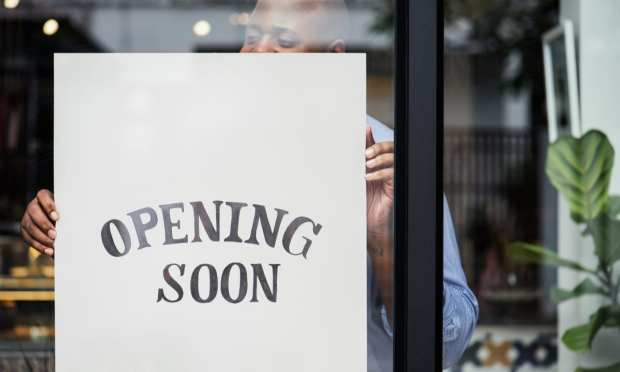Who’s Starting An SMB Amid The COVID Crisis?

The late Roy Ash, financial adviser to U.S. presidents and instrumental in establishing the government’s Office of Management and Budget (OMB) is quoted as saying, “An entrepreneur tends to bite off a little more than he can chew hoping he’ll quickly learn how to chew it.”
Get a pack of gum for chewing practice, because Ash’s aphorism is being mightily tested.
During this period of economic recession and job loss, reopening and reinvention, with new infection hotspots popping up weekly, starting a new business sounds somewhere between slightly iffy and totally bonkers. In fact, fortunes are always made out of disasters, and America’s entrepreneurial spirit may be just the counterforce for a stalled economy.
Optimism around new business is materializing on Main Street, among other places, with small and medium-sized businesses (SMBs) reopening.
“The pandemic dealt a harsh blow to the businesses on Main Street USA when it was first declared, but that impact is beginning to wane,” according to the PYMNTS recent special report, Pandenomics: Main Street’s Six-Month Checkpoint. “Only 9.9 percent of SMBs now say they are closed because of the pandemic, compared to 33.9 percent that had to close solely as a result of the pandemic in March. Far fewer SMBs now report being limited by capacity restrictions than just a few weeks ago. Twenty-five percent of Main Street SMBs now say they are operating with capacity restrictions, whereas 38.6 percent reported the same in March.”
Given those figures, there’s clearly demand (thus opportunity) for new businesses to emerge from the COVID crucible. And new businesses can build on digital foundations, making themselves more efficient, and more resilient against market disruptions in the process.
New Businesses Forming At Fastest Rate Since 2008 Crash
“Americans are starting new businesses at the fastest rate in more than a decade, according to government data, seizing on pent-up demand and new opportunities after the pandemic shut down and reshaped the economy,” The Wall Street Journal recently reported, adding, “Applications for the employer identification numbers that entrepreneurs need to start a business have passed 3.2 million so far this year, compared with 2.7 million at the same point in 2019, according to the U.S. Census Bureau. That group includes gig-economy workers and other independent contractors who may have struck out on their own after being laid off.”
“This pandemic is actually inducing a surge in employer business startups that takes us back to the days before the decline in the Great Recession,” John Haltiwanger, an economist at the University of Maryland who studies business formation data, told the WSJ.
It seems counterintuitive considering the interminably dire news of 2020, but to borrow from the lessons learned from “Jurassic Park,” commerce always finds a way.
Opportunities are appearing everywhere, and entrepreneurial types are sniffing them out. The trick now is to keep new digital-first consumer personae and B2B payments needs in focus.
“Consumer habits have significantly shifted amid the pandemic, so consider how your offerings fit into your customers’ current lifestyle,” wrote the U.S. Chamber of Commerce in a recent blog. “For example, pet adoptions soared by 700% since last year, as people sought pet companionship while they’re spending more time at home. Alexandre Douzet saw an opportunity to help this influx of new pet owners with his business, Pumpkin Pet Insurance, which launched in April.”
Peculiarities of those personae are identified by PYMNTS researchers in exhaustive COVID studies as social shifters, safety shifters, convenience shifter and office shifters. Each has a slightly different take on new retail and ecommerce shopping and payments experiences.
Startups online or on street corners must cater to the digital behaviors consumers have embraced and embed them into new businesses for the best shot at success post-COVID.
